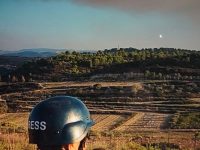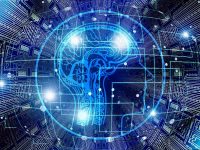Inside the racist brain

« If he were allowed contact with foreigners he would discover that they are creatures similar to himself and that most of what he has been told about them is lies ». George Orwell, 1984
In 2017, over 60 million people deliberately chose to be led by a man who’s repeatedly made racist statements basing his campaign on hate and fear. Many didn’t find his ideas to be fundamental deal breakers. Others obviously shared his prejudiced views illustrating how racial resentment continues to strongly influence social and political outcomes. In the process, understanding the complex nature of racial prejudice has engaged researchers from diverse fields. For its part, political neuroscience (an interdisciplinary venture involving political science, psychology, and cognitive neuroscience) unravelled the physiological indicators behind racial attitudes.
Although social categorisation is a natural process of cognition, prejudice occurs when negative attitudes concerning a social group are extended toward an individual based upon that individual’s membership in the group. Assuming that the negative attitudes are triggered by anxiety, neuroscientists interested in prejudice and stereotyping focused on a structure that controls autonomic responses associated with fear and threatening stimuli, the amygdala. Using functional magnetic resonance imaging (fMRI), researchers measured white skin participants’ brain activity while they viewed faces of Whites and Blacks. They observed a significant increase in amygdala activity immediately following exposure to Black people (vs. White)1. The increase was also observed on the startle eye-blink response, a physiological index of amygdala activity. The activation pattern was correlated with individual differences in implicit racial bias such as political conservatism and biased race categorisation2.
Prejudice by itself does not constitute racism
The studies listed above link implicit racial responses or prejudice to a neural mechanism of fear. However, prejudice by itself does not constitute racism. Prejudice is a normal human response to physical, social, sexual and other forms of differences. A person of any racial group can be prejudiced towards a person of any other racial group, power dynamics put aside. As a matter of fact, despite harboring a strong personal commitment to responding without prejudice, some egalitarians might still be prone to unconscious forms of prejudice. Indeed, fear reactions undermining prejudice can be learned very rapidly. By contrast, stereotypes form through a slower learning process and occur when people reinforce their prejudices and turn them into opinions and in deliberative decisions and actions. Thus, it’s when the prejudice is expressed in actions that the racist outcome is obtained reflecting and reproducing a hierarchy of racial categories. Science corroborates this notion by showing that prejudice and stereotyping are distinct neurocognitive processes. Amodio and Devine (2006) demonstrated that implicit prejudice and stereotypic associations were in fact uncorrelated3. Unlike prejudice, associated with the amygdala activation, stereotypic associations are likely to be stored in the temporal lobes and activated by regions of the dorsolateral PFC involved in conceptual knowledge4.
The question that comes next is how to prevent the prejudicial bias from turning into beliefs and driving behaviours. The human brain is fairly endowed with mechanisms of self-regulation that allow to keep in check ongoing behavioural tendencies. Amodio et al. (2004) proposed that the self-regulation of intergroup bias involves the detection of the racial bias, which should be associated with activity of the dorsal anterior cingulate cortex (ACC). Thus, to reduce prejudice one has to detect its presence.and then replace it with an egalitarian response. This implementation should be associated with regions of the lateral prefrontal cortex (PFC)5.
Once detected, implementing a healthier non-discriminatory response is possible. This goes with the popular view that physiological characteristics shape behaviours rather than the other way around. Following this view, change must start within the individual. Hence if people provide themselves with the necessary knowledge to counteract prejudice, they change their behaviour. This model has its limits as people are biased by the natural tendency to seek the knowledge that confirm their beliefs. ‘We don’t see things as they are, we see them as we are’ as notes the american writer, Anais Nin. The other possibility is that social attitudes shift the individual’s psychological and physiological characteristics. According to this view, People think the way they do because they behave the way they do, and their behaviour is modelled on the behavioural patterns of their culture. In other words, change must start with behaviour then individuals will modify their ideas to fit their acts.
It is most likely that differences in cognitive functions and behaviours both reflect and give rise to each other. People are able to learn to question the righteousness of their own impulses and tune their mental states to understand others’ intentions behaviours. This empathy for others, in turn, regulates behaviour among individuals and social groups. In parallel, individuals prejudice is based on how they have been taught to feel about the other. ‘We have to be taught whom to hate, and if we are not taught to hate people in categories, we won’t‘ argues the anthropologist Margret Mead. asserting that prejudice develops at very early ages. Hence, educators are in unique positions to improve intergroup relations and create a social milieu where prejudice reduction can transpire.










